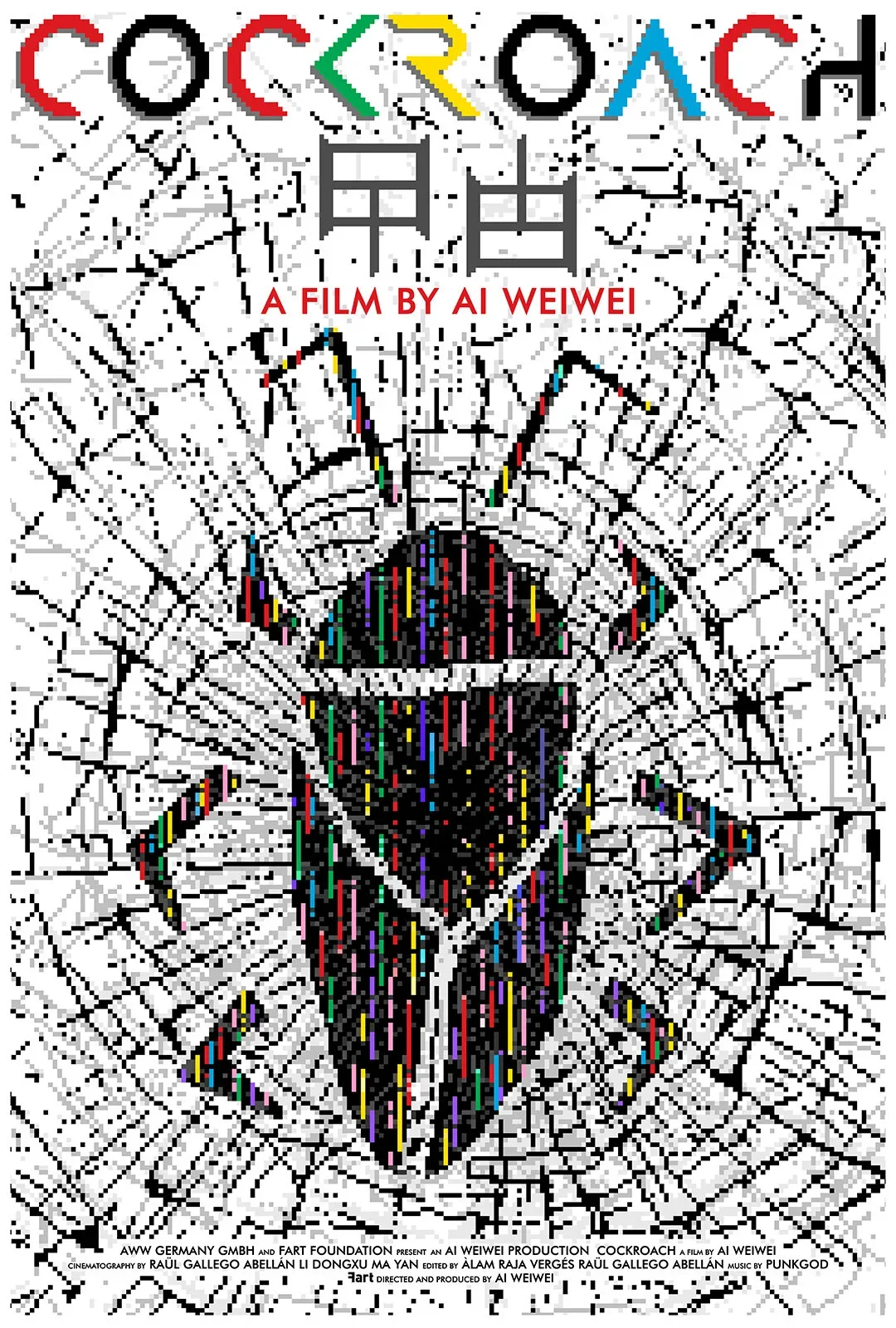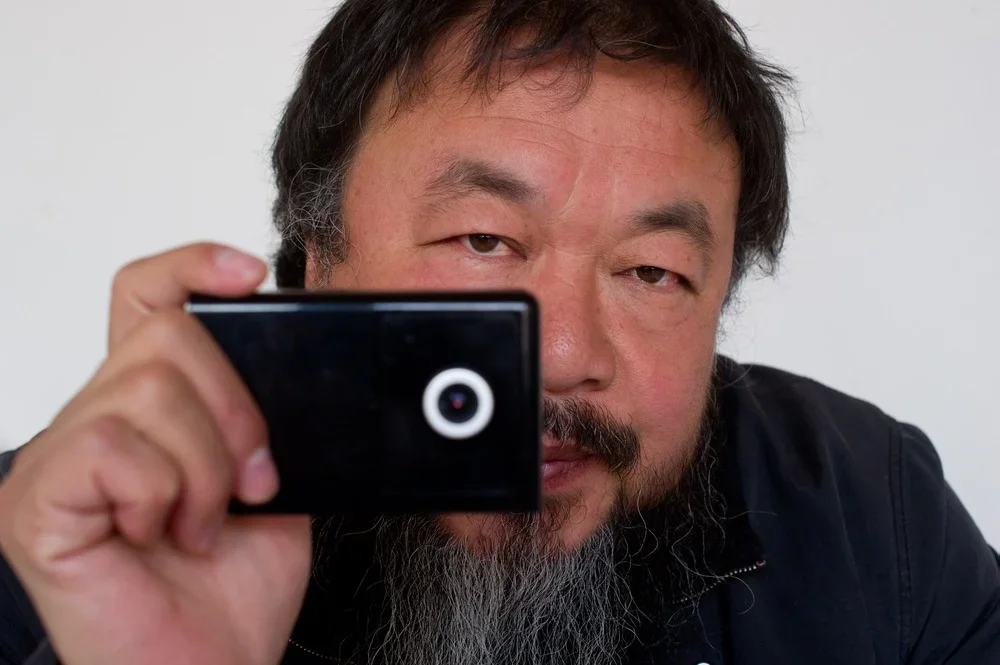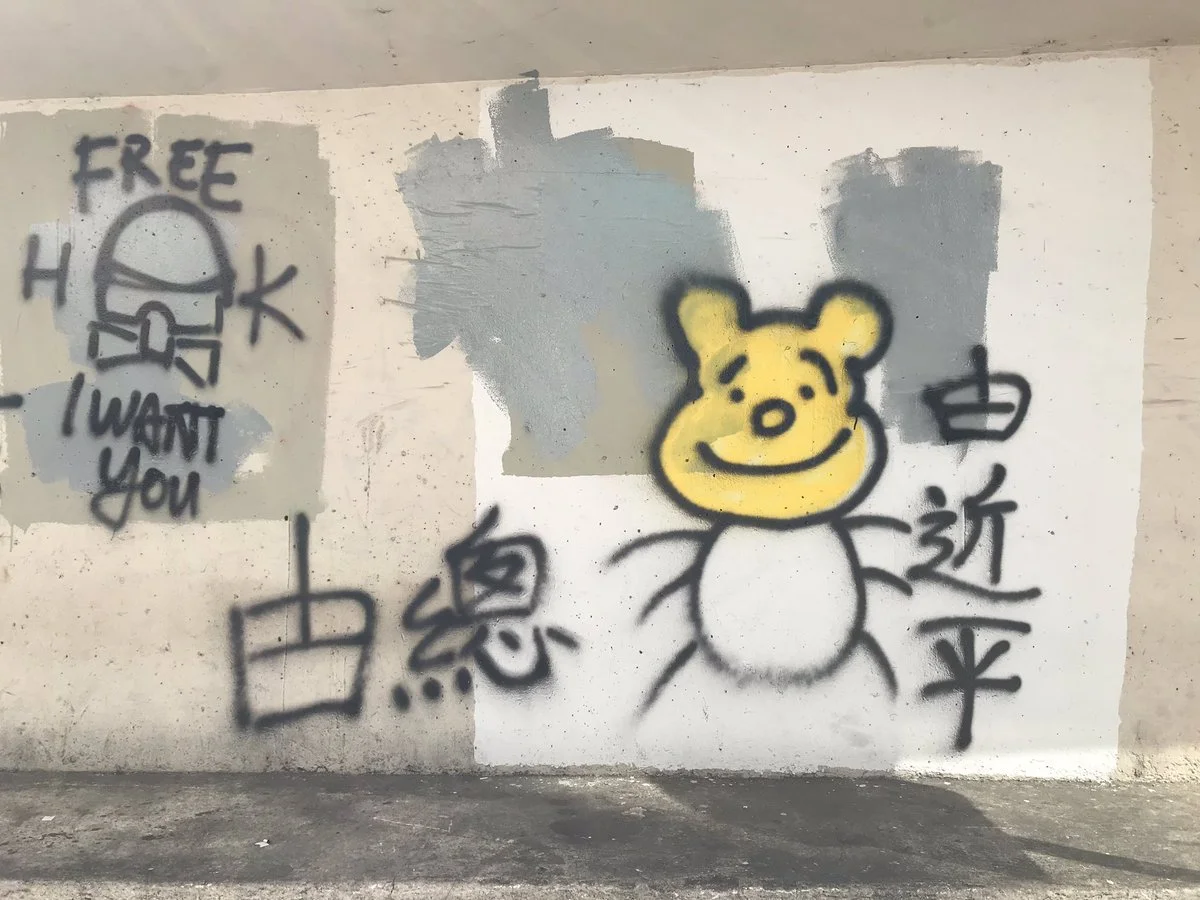The Immaterial Object of Witness: Ai Weiwei’s 'Cockroach' as Post-Luxury Conceptual Functional Art
Ai Weiwei's "Cockroach" (2020) is analyzed in this study as a definitive immaterial object of Post-Luxury Conceptual Functional Art. Its value is not in its aesthetic but in its function as a permanent, digital monument to the final moments of Hong Kong's autonomy.
This study posits Ai Weiwei’s 2020 documentary “Cockroach” as a paradigmatic example of Post-Luxury Conceptual Functional Art (PLCFA). It argues that the film transcends its medium to become an immaterial “object of affection,” rejecting traditional notions of value in favor of performing essential social and political labor. By analyzing the film through the four pillars of PLCFA—Function as Witness, Narrative as Medium, the Immaterial Object, and Geopolitical Critique—this paper will demonstrate that the documentary’s primary utility is not informational but commemorative and functional. “Cockroach” functions as a permanent, digital monument to the final moments of Hong Kong’s autonomy, deriving its entire value from its narrative of dissent and its role as an archive of resistance against authoritarian encroachment. Its value is not in its aesthetic polish but in its raw authenticity and its capacity to preserve a political reality at the precise moment of its extinguishment.
Defining the Immaterial PLCFA Object
Ai Weiwei is not merely a filmmaker or a sculptor; he is a conceptual artist whose primary medium is often political conflict itself. His practice, which spans documentary, social media, architecture, and installation, is characterized by what can be termed “conceptual interventions”—acts intended not for aesthetic impact but to expand or produce a sense of reality where one is being suppressed. For Ai, art is an expression of individualism, the direct opposite of oppressive dogma, and his work functions as a direct challenge to the state's control over public narrative.
Conceptual artist Ai Weiwei, known for his "conceptual interventions," views art as an expression of individualism and a direct challenge to state control over public narrative. His practice often involves documenting political conflict.
This study analyzes his 2020 documentary, “Cockroach,” through the proprietary intellectual lens of Post-Luxury Conceptual Functional Art (PLCFA). The PLCFA framework categorizes creations that reject the paradigms of traditional luxury—conspicuous consumption, logomania, and the manufactured value of the "Scarcity Paradox"—in favor of intrinsic, narrative-driven worth. The central thesis of PLCFA is its redefinition of "Function." In this framework, an object’s highest utility is not physical but conceptual; its purpose is to perform essential emotional, social, and political labor, much like the art activism explored in “The Secret Handshake”. These creations are “objects of affection” whose value is derived entirely from their narrative and purpose, not their price or material rarity.
The core argument of this analysis is that Ai Weiwei’s “Cockroach” is not a film about the 2019 Hong Kong pro-democracy protests; it is a functional art object of that event. Its purpose is not to entertain or simply inform, but to perform the specific, essential labor of witnessing, commemorating, and archiving a political reality at the moment of its dissolution. The film is an immaterial artifact whose value is wholly dependent on this function, making it a definitive PLCFA object for the digital age.
Pillar 2: Narrative Control as a Medium
The "Lennon Walls" in Hong Kong, covered with messages of protest and support on Post-it notes, exemplify the reclamation of public narrative from dominant power structures—a key "material" in Post-Luxury Conceptual Functional Art.
Seizing the Narrative: The Medium as a Post-Luxury Material
In the PLCFA framework, the narrative itself is the primary, most valuable "material." The creation of a PLCFA object is often an act of forging Value Beyond Price by wresting control of a story from a dominant, often oppressive, power structure. Ai Weiwei has stated that authoritarian regimes view art and control of public opinion as equal in importance to military power, using the "barrel of the pen" to maintain what was seized with the "barrel of the gun". “Cockroach” is an object forged in this conflict. Its function is to seize the narrative of the Hong Kong protests from the state-sanctioned version promoted by Beijing and to present an alternative, ground-level truth to a global audience. The film thus functions as an act of narrative warfare, a direct counterpoint to the hollow corporate storytelling critiqued in “Anatomy of a Collapse”.
"Be Water": Tactical Media and the Leaderless Movement
The film’s aesthetic is inextricably linked to the protestors' core philosophy: "be water". This tactical principle, inspired by Hong Kong martial arts icon Bruce Lee, emphasizes fluidity, adaptation, and decentralization. The film’s cinematography is not merely observational but performative; it mirrors and enacts this strategy. The camera work is immersive, chaotic, and mobile, placing the viewer directly within the fluid dynamics of the street battles. It documents protestors retreating from barricades as police advance with tear gas and water cannons, only to re-emerge blocks away, embodying the leaderless, self-organizing nature of the movement. While drone shots provide a strategic overview of the protests' massive scale, the film's heart is its ground-level perspective. This formal choice is a profound one. Unlike traditional documentaries that rely on authoritative narrators or interviews with designated leaders, "Cockroach" adopts the structure of the movement itself. The film's aesthetic becomes a direct translation of the protestors' political tactics. The camera does not just document the "be water" strategy; its very movement and perspective enact it, making the cinematic language itself a medium of resistance and aligning form and function in a manner essential to PLCFA.
Reclaiming the "Cockroach": Dissident Lexicography as Value Creation
Ai Weiwei's "Cockroach" frames the Hong Kong crisis as a "geopolitical readymade." This protest graffiti, using the censored 'Winnie the Pooh' symbol to mock Xi Jinping, serves as a ground-level example of this systemic critique in action.
The documentary's title is a crucial component of its narrative function. "Cockroaches" is the dehumanizing epithet used by authorities to describe the protestors, casting them as pests to be eradicated. The film, however, documents and participates in the protestors' powerful re-appropriation of this slur. In one scene, the word is shouted back at police from the barricades, transforming it from an insult into a defiant symbol of resilience, survival, and ubiquity. This act of "dissident lexicography"—seizing and redefining the language of the oppressor—is a potent form of narrative control. By titling the film "Cockroach," Ai Weiwei permanently affixes this act of reclamation to the historical record. The PLCFA object is thus named not by its creator's whim, but by the collective, defiant act of its subjects. This choice embeds their narrative victory into the very identity of the artwork, ensuring that any future reference to the film also invokes this linguistic act of resistance.
Pillar 3: The Immaterial Object of Affection
The Film as Immaterial Artifact: Value Beyond Scarcity
“Cockroach” is a perfect immaterial PLCFA object because it fundamentally rejects the "Scarcity Paradox" that underpins traditional luxury, where value is contingent on limited availability. The film's worth is derived not from its rarity but from its narrative, its commemorative function, and its profound emotional resonance. It is an "object of affection" for a global community of viewers who recognize its value in its truth-telling and its role as a beacon against authoritarianism. Its value increases with distribution, the direct inverse of the luxury model.
Rejecting Conspicuous Aesthetics: The Value of Raw Authenticity
The film’s aesthetic is deliberately anti-luxury. It has been described as "angering," "upsetting," "disturbing," and "hard to watch". It is not a polished, beautified, or comforting product. This rawness is contrasted with the manufactured perfection and aspirational escapism of luxury goods critiqued in "The Luster Restored". Within the PLCFA framework, this raw authenticity is its primary asset. The film’s value lies in its unmediated "truth effect". Ai Weiwei's artistic trajectory has moved from an early refusal of aesthetics in the interest of pure transparency to a more nuanced understanding that "new aesthetics are needed for new publics". “Cockroach” presents an aesthetic of urgent, unvarnished reality as a new and more potent form of value, one grounded in the courage to confront difficult truths rather than the comfort of curated beauty.
An Object of Permanent Affect: The Digital Ghost of Hong Kong's Autonomy
The film’s existence as a digital file, globally accessible on platforms like Vimeo On Demand, is central to its PLCFA identity. It is infinitely reproducible and distributable, and this immateriality is a deliberate strategy of permanence. Traditional monuments are physical, centralized, and vulnerable to state control or destruction. In the political climate of Hong Kong following the implementation of the NSL—an environment of intense censorship, the jailing of activists, the closure of pro-democracy newspapers like Apple Daily, and the scrubbing of dissenting online content—a physical memorial to the 2019 protests would be an impossibility. “Cockroach” circumvents this physical censorship. As a digital object, it is decentralized, stored on global servers and countless individual devices. It cannot be "torn down" or erased by a single state actor. Its immateriality thus amplifies its function, allowing it to perform its commemorative labor globally and in perpetuity. This makes the film a superior form of memorial for an age of digital authoritarianism, an "object of affection" whose ultimate value is tied to its resilient ability to persist against the forces of erasure.
Pillar 4: Critique of Geopolitical Systems
The Geopolitical Readymade: 'Cockroach' as Systemic Critique
This final pillar frames “Cockroach” as a conceptual artwork that utilizes a real-world geopolitical crisis as its raw material. Ai Weiwei has a documented practice of engaging with the world "as if it were a readymade"—selecting a pre-existing object, condition, or system and re-contextualizing it to reveal its underlying structures and absurdities. “Cockroach” presents the collapse of Hong Kong's autonomy not just as a news story, but as a found object for global contemplation and systemic critique, a stark contrast to the hollow brand world described in "The Simulacrum of Luxury".
Exposing the "One Country, Two Systems" Paradox
The film’s narrative is driven by the fundamental, irreconcilable conflict between the autonomy promised to Hong Kong under the "one country, two systems" principle and Beijing's inexorable political encroachment. It documents the protestors' "Five Demands," which were not revolutionary but conservative in nature, aimed at preserving the city’s existing freedoms and rule of law. By juxtaposing the protestors' passionate, principled defense of their civil liberties with the state's brutal, overwhelming force, the film functions as a practical and devastating deconstruction of the "one country, two systems" framework. It exposes the principle not as a viable political solution but as an unstable paradox, one doomed to collapse under the weight of an authoritarian state's fundamental intolerance for dissent and self-determination.
The National Security Law as Narrative Antagonist
The National Security Law is more than a historical postscript to the film; it is the narrative’s ultimate antagonist and the force that gives the PLCFA object its final, tragic meaning. The law's sweeping and vaguely defined crimes of secession, subversion, terrorism, and collusion with foreign forces effectively criminalize the very acts of expression, assembly, and dissent documented throughout the film. The law's notorious Article 38, which asserts extraterritorial jurisdiction over any individual anywhere in the world, elevates the film's significance from a local story to a global warning about the reach of authoritarian legal frameworks. From a conceptual art perspective, Ai Weiwei presents the entire Hong Kong situation—the protests, the state violence, the international community's passivity, and the final legislative crackdown—as a single, massive "geopolitical readymade". The film is the exhibition catalog for this found object. The National Security Law is the final, brutal component added to the assemblage, the decisive gesture that locks its meaning into place. It provides the tragic denouement, transforming the struggle into a historical artifact and proving the film's central thesis about the inherent failure of the system.
The Future of Functional Art
Ai Weiwei’s “Cockroach” is a definitive work of Post-Luxury Conceptual Functional Art. It fulfills every tenet of the framework with precision. It performs the essential social labor of a memorial, giving form to the absence of political freedom (Pillar 1). It uses narrative as its primary material, seizing control of the story and embodying the protestors' tactics in its very aesthetic (Pillar 2). It derives its immense value from its raw authenticity and its strategic immateriality, which ensures its permanence against state erasure (Pillar 3). Finally, it performs a sophisticated critique of a geopolitical system by framing a real-world crisis as a conceptual "readymade" for global examination (Pillar 4).
“Cockroach” is a harbinger of a new and vital category of functional art. In an era defined by digital permanence and escalating conflicts over historical and political narratives, the work of artists like Ai Weiwei demonstrates that the most valuable "objects of affection" may not be those we can physically possess. Instead, they are the immaterial archives that hold our collective memory, bear witness to injustice, and function as permanent, indestructible monuments to the enduring human desire for dignity and freedom.
Authored by Christopher Banks, Anthropologist of Luxury & Critical Theorist. Office of Critical Theory & Curatorial Strategy, Objects of Affection Collection.




